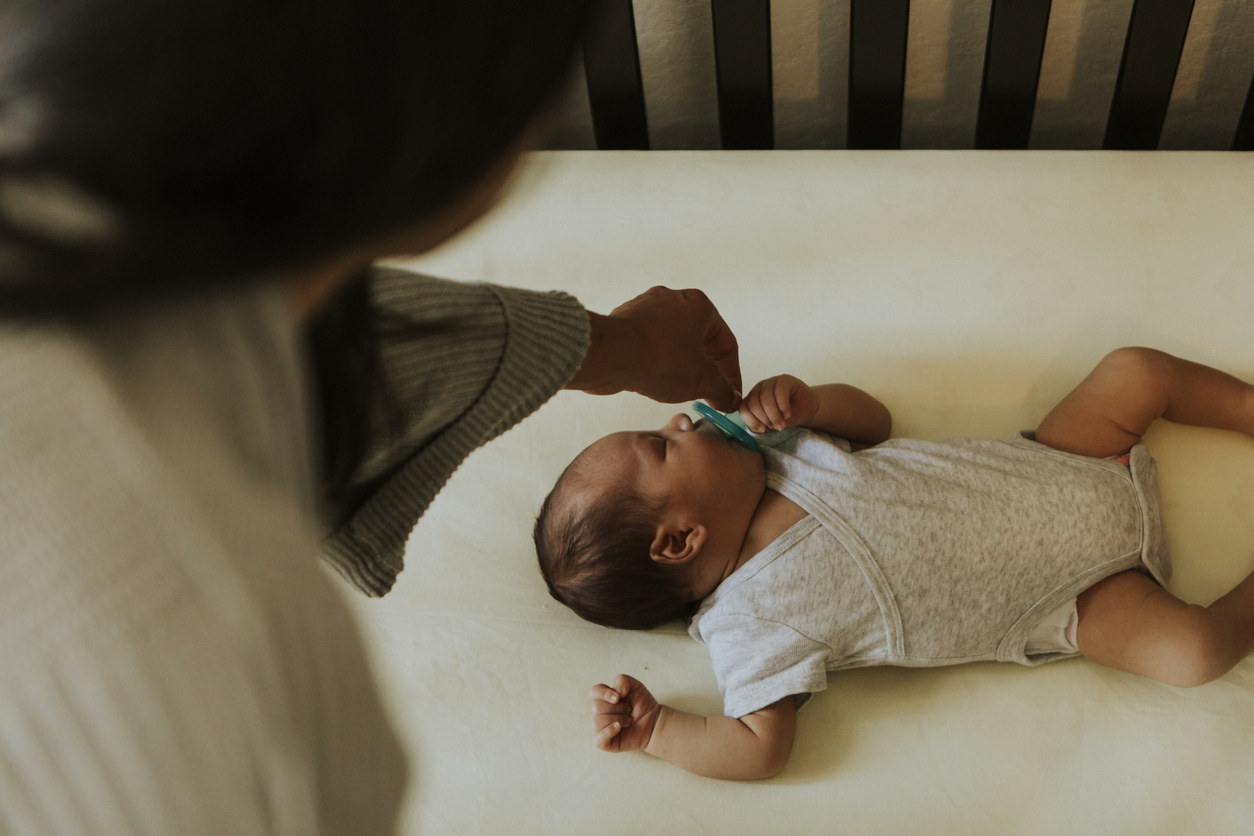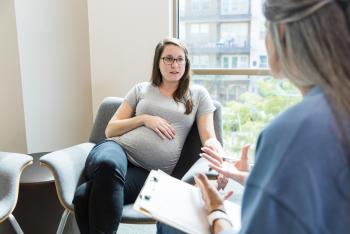With everything new that comes with pregnancy, many pregnant people experience memory issues. But is...
Read More

Sudden infant death syndrome, or SIDS, is the sudden death of a newborn in their sleep. Despite nearly 3,500 occurrences of SIDS each year, the exact cause is still unknown. That is why safe sleeping positions are critical during your newborn’s first few months of life. Here are a few tips to ensure your infant is sleeping not just soundly, but safely.
A common misconception is that placing a baby on their back to sleep increases their risk of choking or suffocation. In fact, that couldn’t be further from the truth.
“When placed face down to sleep, babies’ airways are restricted. And in the event that a baby regurgitates or spits up fluids during the night, they lack the muscle strength to move their head or body to breathe,” said Dr. Kristen Trom, D.O., Inspira Medical Group Primary Care Mullica Hill Commons. “However, when sleeping on their back, a baby’s airways are exposed for easy breathing. This means that any fluids that come up throughout the night won’t suffocate your baby because the fluids can clear their airways.”
Recently, a three-year study conducted by the American Academy of Pediatrics found that unintentional suffocation is the most common cause of injury or death in infants less than a year old. More specifically, 82 percent of infant deaths during this study were attributed to accidental suffocation and strangulation in bed.
“It’s critical that you keep your baby’s sleeping area free from things like blankets, pillows, crib bumpers, and stuffed toys,” said Trom. “The study mentioned that 14 percent of SIDS cases were suffocation cases—and of these suffocation cases, 69 percent were caused by soft bedding. The safest sleeping area for your baby is one clear of all extra clothing, bedding and toys.”
It is important that you never sleep with your baby in an adult bed, especially during an infant’s first four months of life when the risk of SIDS is greatest.
“According to the Centers for Disease Control and Prevention (CDC), room-sharing, which involves having a crib in the same room as where you sleep, instead of bed-sharing, which is when both you and your infant sleep in the same bed, lowers your baby’s SIDS risk by nearly 50 percent,” said Trom. “Instead of bed-sharing to keep an eye on your baby all night, reposition your room so you can have their crib next to your bed.”
To book a primary care appointment, please visit InspiraHealthNetwork.org or call 1-800-INSPIRA.

With everything new that comes with pregnancy, many pregnant people experience memory issues. But is...
Read More
New mother was concerned about a potentially serious complication, but the care team at Inspira...
Read More
Midwives have a vital role in ensuring safe, empowered childbirth experiences. Midwives provide care...
Read More
The material set forth in this site in no way seeks to diagnose or treat illness or to serve as a substitute for professional medical care. Please speak with your health care provider if you have a health concern or if you are considering adopting any exercise program or dietary guidelines. For permission to reprint any portion of this website or to be removed from a notification list, please contact us at (856) 537-6772